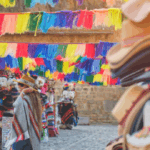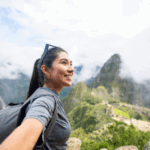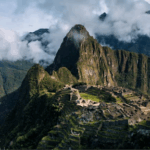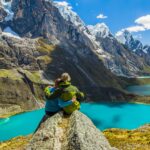
When most people think of Peru, their minds immediately jump to the iconic Machu Picchu. And rightly so—this ancient Incan citadel is one of the world’s most breathtaking archaeological sites. But Peru’s charm goes far beyond Machu Picchu, offering a treasure trove of lesser-known destinations that are just as awe-inspiring, rich in history, and bursting with natural beauty. For travellers who want to explore off the beaten path, dive deep into authentic culture, and avoid crowds, these hidden gems provide unforgettable experiences. Whether you’re trekking through mysterious ruins, marvelling at spectacular waterfalls, or relaxing in a desert oasis, Peru’s lesser-known spots invite you to discover a whole new side of this incredible country.
Why Explore Peru’s Hidden Gems?
The travel world is shifting. More and more, visitors seek authentic experiences that allow them to connect with local culture, nature, and history in a sustainable way. Peru’s well-known destinations remain popular, but there’s growing interest in exploring areas that are less crowded and commercially developed. This not only provides a more intimate travel experience but also helps spread tourism benefits to communities off the main tourist routes.
Peru’s diverse geography—ranging from coastal deserts and soaring Andes mountains to dense Amazon rainforests—means there is always something new to discover. And depending on where you plan to go, it’s worth understanding the best time to visit Peru so you can align your trip with ideal weather and local events. While Machu Picchu draws millions annually, many of the country’s equally fascinating places remain relatively untouched, offering solitude and unique cultural insights.
The Top 10 Hidden Gems in Peru
- Kuelap Fortress
Known as the “Machu Picchu of the North,” Kuelap is an ancient walled city built by the Chachapoyas culture around the 6th century. Located high in the cloud forests of the Amazonas region, it is one of the largest stone fortresses in South America. Unlike Machu Picchu, Kuelap sees far fewer visitors, allowing for a more peaceful exploration of its circular stone buildings and panoramic mountain views. Visitors can reach Kuelap by a cable car ride from the nearby town of Chachapoyas, followed by a short hike to the site.
- Gocta Waterfall
Gocta Waterfall is one of the tallest waterfalls in the world, plunging nearly 771 meters into the lush jungle below. Hidden in the Amazonas region, Gocta remained unknown to outsiders until 2005. Hiking to the waterfall takes about two to three hours through stunning forest scenery filled with exotic wildlife and orchids. The local community welcomes visitors warmly and maintains the area’s natural beauty.
- The Ballestas Islands
Often called the “Poor Man’s Galápagos,” the Ballestas Islands lie just off the coast near Paracas. These rocky islands are a sanctuary for diverse marine wildlife including sea lions, Humboldt penguins, pelicans, and numerous seabirds. Day boat tours depart regularly and offer a close-up experience of this rich ecosystem without the higher costs and regulations of the Galápagos Islands.
- Marcahuasi Stone Forest
Marcahuasi is a mysterious plateau filled with giant rock formations shaped by wind and erosion over thousands of years. Located about a four-hour drive from Lima and a challenging hike to reach the summit, this site attracts hikers, nature lovers, and those fascinated by legends of ancient civilizations and mystical energies. Camping under the stars here is a magical experience.
- Chachapoyas Town
Chachapoyas is a quaint town serving as the gateway to many Amazonas attractions, including Kuelap and Gocta. The town itself features charming colonial architecture, colorful markets, and authentic local cuisine. It offers a slower pace and an opportunity to experience the traditions of the Chachapoyas people away from mainstream tourism.
- Huacachina Oasis
Nestled in the coastal desert near the city of Ica, Huacachina is a natural oasis surrounded by towering sand dunes. This small village is famous for its sandboarding, dune buggy rides, and stunning sunsets over the desert. The contrasting landscape of palm trees and golden dunes makes Huacachina a unique destination unlike anywhere else in Peru.
- Tambopata National Reserve
Located deep in the Peruvian Amazon, Tambopata is a biodiversity hotspot with some of the richest wildlife in the world. The reserve protects thousands of species including macaws, jaguars, giant river otters, and countless insects and plants. Guided eco-tours provide insight into rainforest ecology and indigenous cultures, making it a perfect choice for nature enthusiasts and bird watchers.
- Lake Sandoval
Lake Sandoval is a hidden gem within the Tambopata National Reserve, known for its calm black waters and abundant wildlife. Canoe tours glide silently through the lake’s labyrinth of flooded forest, offering chances to see giant otters, monkeys, and colorful birds. It’s a peaceful spot to immerse yourself in Amazonian nature away from busier trails.
- Colca Canyon
Colca Canyon is one of the deepest canyons in the world, twice as deep as the Grand Canyon. It is famous for the majestic Andean condors soaring above its cliffs. Visitors can hike traditional trails, soak in natural hot springs, and visit ancient villages where indigenous communities still practice age-old farming methods. Colca offers a fascinating blend of natural beauty and living culture.
- Choquequirao
Often referred to as the “sister city” of Machu Picchu, Choquequirao is a remote Inca archaeological site that requires a challenging multi-day trek to reach. Far fewer visitors come here, making it ideal for those seeking solitude and adventure. The site’s terraces, plazas, and temples reveal insights into Incan engineering and spirituality. The trek passes through stunning Andean landscapes filled with orchids, hummingbirds, and waterfalls.
History and Logistics
Peru’s hidden gems come with fascinating histories that often get overshadowed by Machu Picchu’s fame. Kuelap, for instance, was built by the Chachapoyas, an ancient culture known as the “Warriors of the Clouds,” while Colca Canyon holds centuries-old traditions linked to indigenous communities.
Getting to these sites typically requires some effort. Many are reachable only by hiking, local buses, or small regional flights. Booking a knowledgeable local guide is highly recommended. Not only will a guide deepen your understanding of the history and culture, but they also ensure your visit is safe and respectful of the environment.
Sustainable and Responsible Travel
Exploring Peru’s hidden gems offers an opportunity to travel ethically and support conservation. Opt for local guides and community-based tours that ensure tourism revenues benefit residents directly. Respect cultural practices by asking permission before photographing people or sacred sites.
Minimize your environmental footprint by carrying reusable water bottles, avoiding single-use plastics, and sticking to marked trails. Many areas have delicate ecosystems and fragile ruins that require care to preserve for future generations. Getting around responsibly is also key—planning ahead with this Peru transportation guide can help you choose eco-friendly and efficient travel options.
Responsible travelers help keep these hidden gems pristine and vibrant, ensuring they remain special places to discover for years to come.
Conclusion
Peru is a country of endless wonder, and its hidden gems beyond Machu Picchu reveal a deeper, more authentic side to its history and natural beauty. From towering waterfalls and ancient stone cities to desert oases and Amazonian wildlife, these lesser-known destinations promise unforgettable adventures far from the crowds.
If you’re ready to explore Peru’s undiscovered treasures, start planning now. Use this guide as your compass, and don’t forget to visit Peru for trusted travel information and updates.
Frequently Asked Questions
Are these hidden gems safe to visit?
Yes, but since many are in remote areas, it’s important to travel prepared and consider hiring local guides.
What is the best time of year to visit these places?
Generally, the dry season from May to September is ideal for most destinations to avoid rain and mud.
Do I need a guide for these locations?
While not always mandatory, a guide is highly recommended for safety, cultural insight, and navigating remote areas.
How do I get to these off-the-beaten-path spots?
Access varies; some require flights, buses, or hiking. Research each destination carefully and plan accordingly.
Can I visit these hidden gems on a budget?
Many destinations have low to moderate costs, especially if you use local transport and guides. Multi-day treks may require more investment in gear and logistics.





